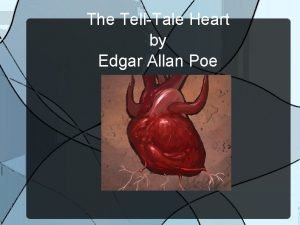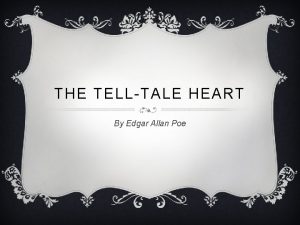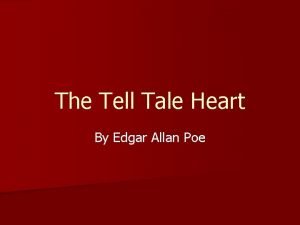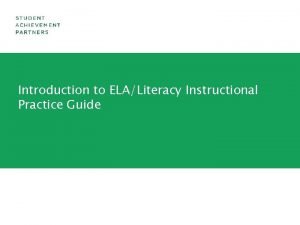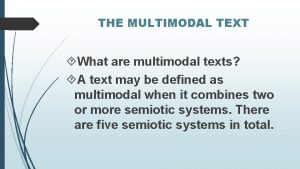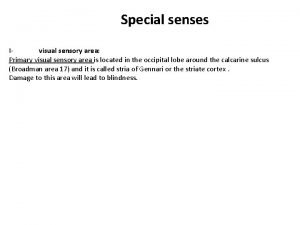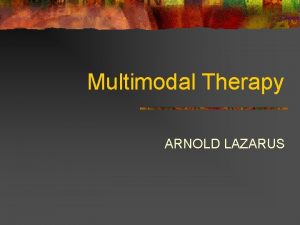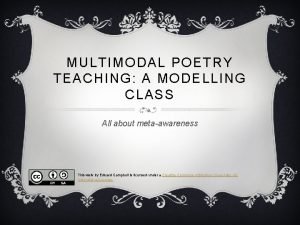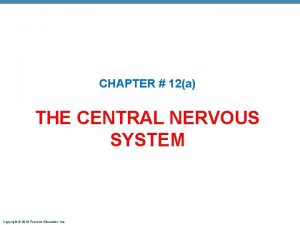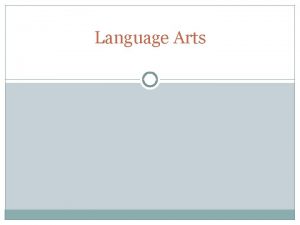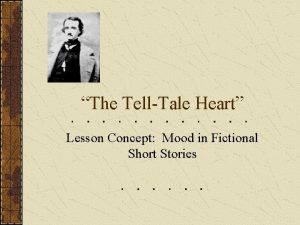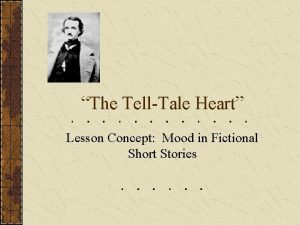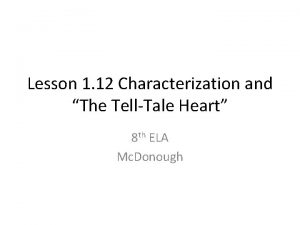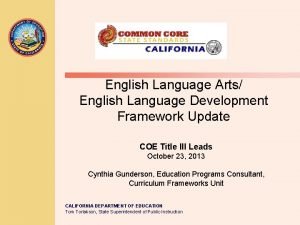TellTale Heart Multimodal Lesson English Language Arts Essential
















- Slides: 16


Tell-Tale Heart Multimodal Lesson English Language Arts

Essential questions: ● How does an author convey mood? ● How does understanding an author’s style contribute to your understanding of the work?

As you are seated. . . ●On one of your sticky notes, write about what you NOTICE is different about this classroom. ●On the other sticky note, write about what you WONDER about the way the room is set up or about what we will be studying today.

While the story plays. . . ● Draw anything that comes to mind while listening to the story

On the back of your drawing ● EXPLAIN in a few sentences what you drew and why. Think about the shapes you drew, the colors you used, etc.

MOOD ● A literary element that evokes certain feelings or vibes in readers through words and descriptions. Usually, mood is referred to as the atmosphere of a work as it creates an emotional situation that surrounds the readers.

STYLE ● The way an author writes. Many authors have a unique style that sets them apart and makes their work almost instantly recognizable.

SIMILE ● A comparison between two unlike things using “like” or “as. ”

METAPHOR ● As with simile, metaphor is a comparison between two unlike things but does NOT use “like” or “as. ”

REPETITION ● When an author repeats certain words, phrases, or even sentences to achieve a certain effect in writing.

IMAGERY ● When an author uses very descriptive sensory words to “paint a picture” for the reader. Imagery can include all five senses - taste, touch, sound, sight, and smell.

Literary Elements in “The Tell. Tale Heart” ● Look for examples of the lit terms in “The Tell-Tale Heart” as we read today. Add them to your chart. Be prepared to discuss them.

GALLERY WALK ● As you walk around the room, notice how each student has captured the STYLE and/or MOOD of the story in a unique way.

Final Reflection While writing for 20 minutes, please answer the following questions: ○ How does an author convey mood? ○ How does understanding an author’s style contribute to your understanding of the work? In your answer, please cite evidence from Poe’s work as well as what you noticed from the drawing activity.

 Summary tell tale heart
Summary tell tale heart Themes of tell tale heart
Themes of tell tale heart Telltale girlfriend collective
Telltale girlfriend collective Creative arts grade 7 lesson plans term 4
Creative arts grade 7 lesson plans term 4 Ricas reference sheet
Ricas reference sheet Ricas english language arts
Ricas english language arts Ricas english language arts
Ricas english language arts Essential non essential fatty acids
Essential non essential fatty acids Usf bull sync
Usf bull sync Multimodal vs multimedia
Multimodal vs multimedia Color vectors and viewpoint in still and moving images
Color vectors and viewpoint in still and moving images Ivisual
Ivisual Lazarus basic id model
Lazarus basic id model Poem for my mother by jennifer davids analysis
Poem for my mother by jennifer davids analysis Componentes de la estrategia multimodal
Componentes de la estrategia multimodal Somatosensory association cortex
Somatosensory association cortex Tonusrubbning
Tonusrubbning
